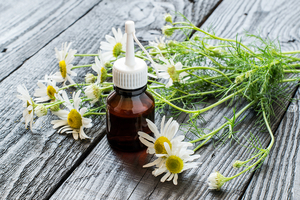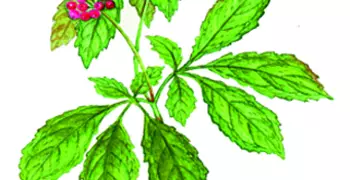What Are Essential Oils?

An essential oil is a natural product extracted from a single plant species. Not all plants produce essential oils, and in the plants that do, the essential oil may be found in the roots, stems, leaves, flowers, or fruits.
What is the difference between "aromatherapy" and "essential oils"?
 Basically, these terms mean the same thing. We think the term "aromatherapy" is a bit of a misnomer because it implies that all essential oils smell nice. On the contrary, there are many essential oils that do not have a pleasant odor. While smell is very subjective, German chamomile is an example of an essential oil that does not appeal to many people. Also, the name "aromatherapy" implies that smelling, or inhaling, essential oils is the only way to get therapeutic benefit, but there are actually a number of ways to use essential oils.
Basically, these terms mean the same thing. We think the term "aromatherapy" is a bit of a misnomer because it implies that all essential oils smell nice. On the contrary, there are many essential oils that do not have a pleasant odor. While smell is very subjective, German chamomile is an example of an essential oil that does not appeal to many people. Also, the name "aromatherapy" implies that smelling, or inhaling, essential oils is the only way to get therapeutic benefit, but there are actually a number of ways to use essential oils.
While we think the term "essential oil therapy" is a more descriptive name for this topic, we refer to it as "aromatherapy" because it currently has better name recognition.
How are essential oils extracted?
It is important to know something about how essential oils are extracted because oils from the same plant extracted in different ways can result in very different products.
Steam Distillation
In this method, steam is directed through the plant material. The steam vaporizes the lighter chemicals contained within the plant material. The steam is then condensed through a cooling process. This process generates two products: the essential oil, which contains oil-soluble molecules, and a hydrolat or hydrosol, which contains water-soluble molecules.
Rose water is one of the best known and most widely-used hydrosols worldwide, with many cosmetic and culinary uses. In fact, in the past, rose petals were distilled as much for their hydrosol as their essential oil. Some essential oils, like rose oil (rose otto), smell different from the flowers from which they were obtained because the heat of distillation alters some of the chemicals that gives them their distinctive smell.
Expression
Expression is used to extract essential oils from citrus fruits. Expression is the process of grating or scraping the peel of a citrus fruit to release the oils. For example, when zesting a lemon, the scent of lemon rises into the air because the volatile oils have been released from sacs found in the peel.
In the process of essential oil expression, care is taken to capture the oil. Expression does not involve heating; thus, the chemistry of citrus essential oils is not heat-altered and citrus oils smell very similar to the fruits from which they come.
Supercritical C02 Extraction
In supercritical C02 extraction, carbon dioxide is used as a solvent. It is added and eliminated to produce a high-grade extract that is very close to the composition of the natural raw material. C02 extracts are different from distilled oils in that they contain a wider range of the chemical molecules found in the plant material.
You might find essential oils obtained by both distillation and C02 extraction from the same plant species. They would be chemically different; therefore, they may have different therapeutic qualities as well as different safety factors to take into account.
Two interesting facts
✔ Essential oils are also used by plants themselves. Naturally occurring essential oils in plants help with infection control, humidity control, hormonal effects, wound healing, and attracting or repelling insects, birds, and animals.
✔ Essential oils do not feel oily; they are called "oils" because they contain the oil-soluble chemicals in the plant (usually 100 to 200 chemicals per essential oil). This complex chemistry gives essential oils their therapeutic properties and explains why different essential oils may have overlapping effects.

